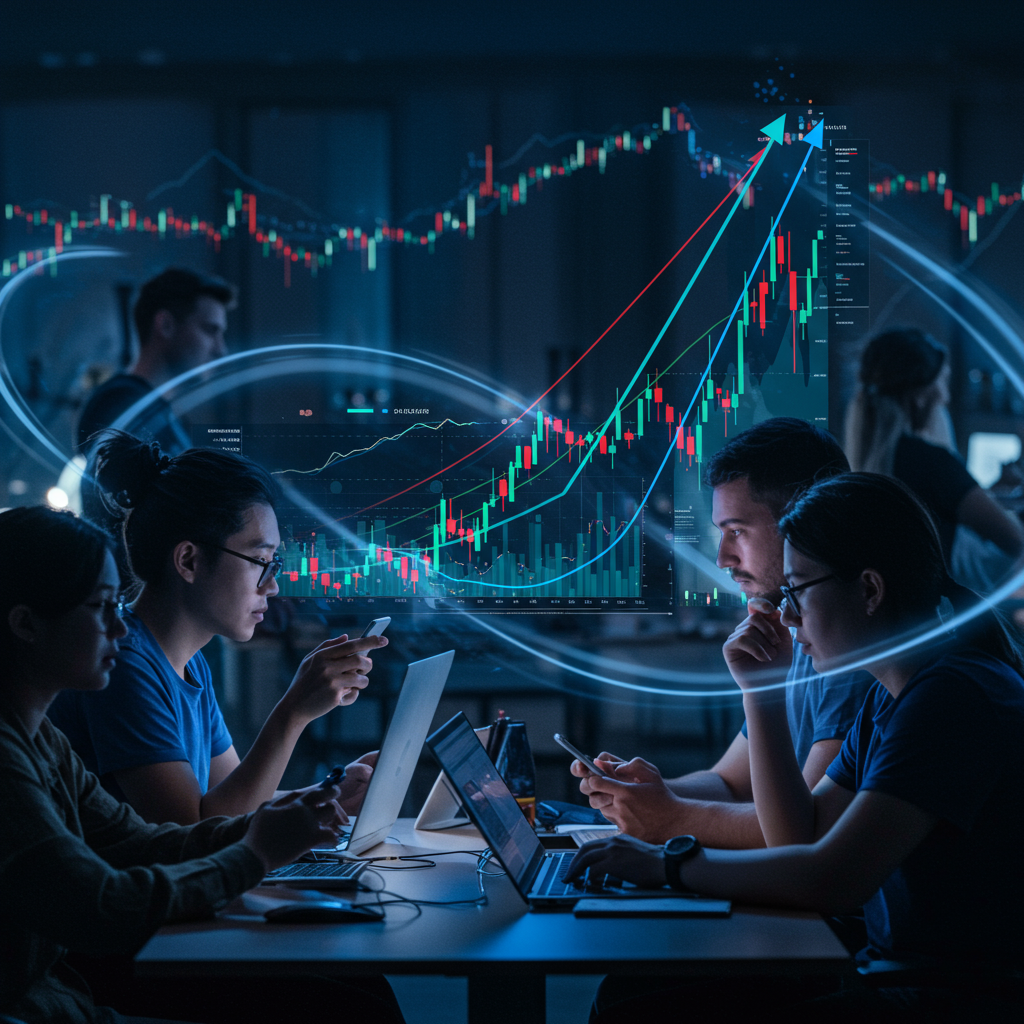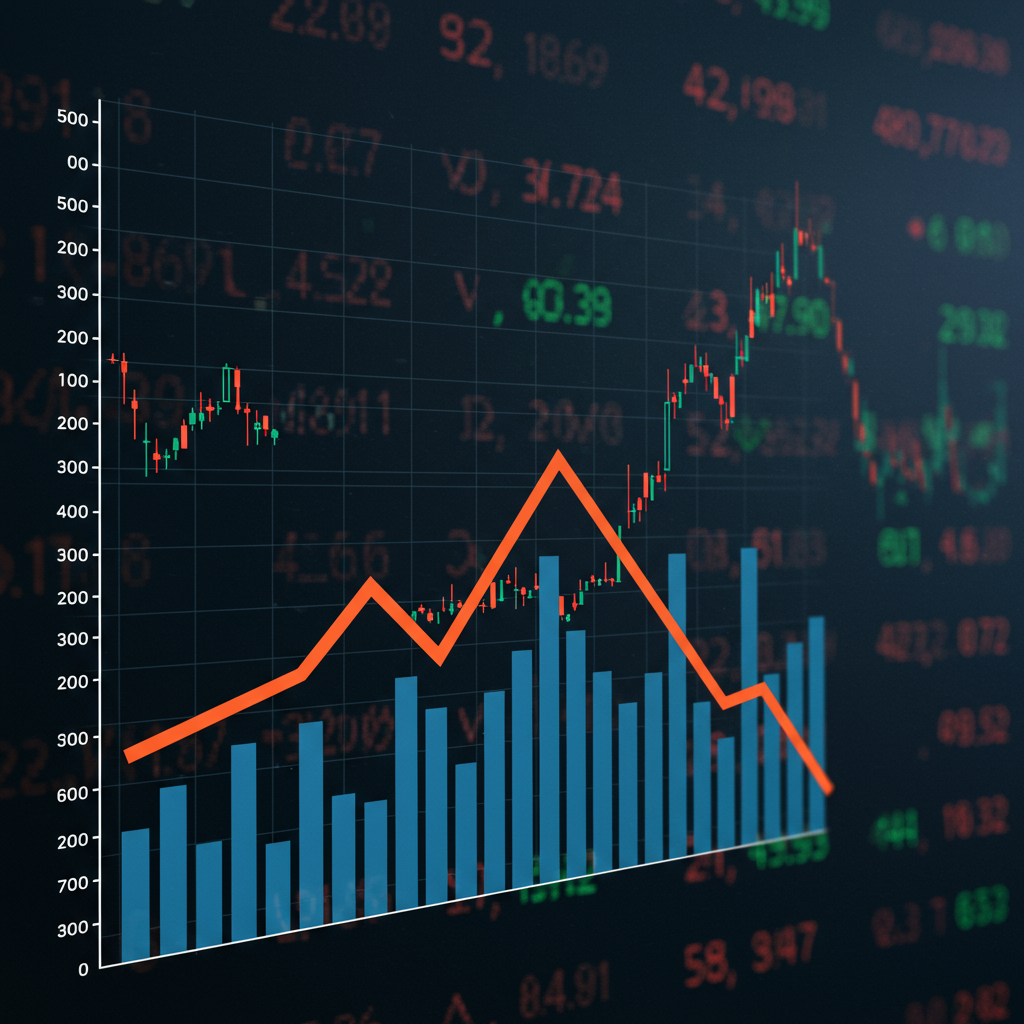The second quarter of 2025 has redefined market dynamics, witnessing a remarkable surge in retail investor activity that propelled major equity benchmarks to unprecedented heights. This occurred even as headlines pulsed with volatility from geopolitical tensions, escalating tariffs, Middle East conflicts, and contentious fiscal policy debates. Trading volumes swelled dramatically, presenting a critical puzzle for market observers: Does this signify retail confidence in enduring market strength, or does it represent a high-stakes gamble on a potentially fragile market environment? Examining this phenomenon through the lens of behavioral finance reveals the complex psychological undercurrents at play and the potential risks beneath the surface optimism.
The Q2 2025 Market Paradox
Amid a backdrop of global uncertainty, Q2 2025 demonstrated surprising market resilience. Despite significant geopolitical flashpoints and economic policy debates, retail investors entered the fray with remarkable force. Data from platforms like Robinhood indicated a substantial 25% increase in daily trades during June alone. This surge in participation pushed trading volumes to levels previously considered extraordinary, directly contributing to the upward trajectory of equity markets. The resilience observed challenges traditional assumptions about investor behavior during periods of instability.
Driving Forces: Psychology and Algorithms
The surge in retail trading is driven by more than just reaction to news events; it’s actively shaped by psychological and technological factors. A powerful mix of FOMO (Fear of Missing Out) and algorithmic momentum is at play. Social media platforms, particularly sites like Reddit and Twitter, act as amplifiers, quickly disseminating sentiment and contributing to rapid shifts in trading focus. The psychology of scarcity also influences behavior. When markets demonstrate quick rebounds after initial dips—such as the swift recovery following the Israel-Iran ceasefire in June—retail traders often perceive these corrections not as warnings, but as attractive buying opportunities. This dynamic is further reinforced by algorithmic trading systems. These bots are designed to detect and react to subtle shifts in sentiment and trading volumes, accelerating price movements. For instance, the Nasdaq’s robust 17.7% gain in Q2, heavily weighted towards AI and cloud computing stocks, was significantly boosted by bot-driven flows responding to major news, including developments related to U.S.-China tech decoupling.
Underestimating the Risks: The “Fragile Five”
Despite the apparent market resilience and retail optimism, a closer look reveals significant underlying fragilities that investors may be overlooking. These constitute a “Fragile Five” set of risks:
- U.S. Debt and Credit Standing: Concerns persist around the staggering $36 trillion U.S. national debt ceiling. Moody’s recent credit rating downgrade serves as a stark reminder of potential fiscal instability, which could impact global investor confidence and borrowing costs.
- Elevated Inflation Expectations: While moderating slightly, year-ahead inflation expectations remain elevated at 5% according to sentiment surveys, significantly above the Federal Reserve’s target. Lingering inflation erodes purchasing power and can pressure corporate margins.
- Stagnant Fed Rates Amid Slowing GDP: The Federal Reserve has kept interest rates stagnant despite a noticeable slowdown in GDP growth, which registered a modest 1.4%. This combination raises questions about the effectiveness of current monetary policy in stimulating growth without reigniting inflationary pressures.
- Geopolitical Flashpoints: Beyond the Middle East, critical geopolitical tensions persist, notably in areas like the South China Sea. These potential flashpoints introduce unpredictable risks that could disrupt global trade and economic stability.
- Supply Chain Vulnerabilities: Fragilities within global supply chains, particularly concerning critical minerals essential for key industries like technology and electric vehicles, remain a vulnerability. Disruptions here can lead to cost spikes and production delays.
- Monitor Geopolitical Triggers Actively: Stay vigilant regarding key stress points that could escalate tensions. Watch oil prices, which often react swiftly to Middle East instability, and track the status of China-U.S. trade negotiations, as these can directly impact tariffs and supply chains.
- www.ainvest.com
- www.ainvest.com
- www.financemagnates.com
- www.ainvest.com
- m.economictimes.com
Investors betting on a continuation of the “nothing-bad-happens” narrative, which has largely held sway since 2023, might be underestimating the potential for these interconnected risks to converge and trigger a more systemic market shock.
Behavioral Red Flags Waving
The behavioral finance lens also highlights two specific red flags in the current market environment that could signal excessive risk-taking:
Overconfidence: Many retail investors are heavily allocating capital into sectors known for high sensitivity to global trade dynamics and supply chain issues, such as semiconductors and electric vehicles. Despite tariff risks and potential mineral shortages, the S&P 500’s Information Technology sector posted a remarkable 22% year-to-date gain in Q2, largely driven by large-cap tech. In stark contrast, the Russell 2000 index of small-cap stocks lagged significantly, partly due to greater exposure to tariff-driven margin pressures. This divergence suggests a concentrated bet on large tech seemingly immune to macro risks.
Herding: Data indicates a notable trend of investors moving together into specific, often riskier, asset classes. The correlation between retail trading activity and investments in crypto and ESG (Environmental, Social, and Governance) ETFs has reached a 5-year high. This signals a collective search for yield and growth in areas perceived as having strong momentum, potentially overlooking fundamental risks.
This inclination towards concentrated bets and following herd instincts contributes to the tech-heavy Nasdaq’s disproportionate outperformance and exacerbates potential risks should sentiment abruptly shift.
Valuation Concerns and Market Trends
The aggressive market gains in Q2 2025 have led to widening valuation gaps. The S&P 500’s price-to-earnings (P/E) ratio now sits above its 10-year historical average. This elevated valuation is occurring even as underlying corporate profit growth shows signs of slowing. This divergence raises questions about the sustainability of current price levels, suggesting that market gains may be driven more by multiple expansion (investors paying more for each dollar of earnings) than by robust earnings growth itself.
Furthermore, the underperformance of small-cap stocks relative to large-cap counterparts, particularly within technology, highlights a distinct preference among investors for perceived “blue chip” resilience. While this trend might reflect a flight to quality during uncertain times, it also indicates market breadth is narrow. A reversal could occur if geopolitical tensions subside or macro risks recede, potentially leading to a rotation back into smaller companies.
Spotlights on Specific Assets and Capital Flows
The Q2 2025 landscape also saw notable movements in specific asset classes and investor segments, providing further insight into global capital flows.
Bitcoin’s Resilience and Institutional Push
Bitcoin, often seen as a proxy for market risk appetite and a potential digital safe haven, demonstrated significant strength. Trading near $106,600 in mid-June, the cryptocurrency showed remarkable resilience, bouncing effectively from key support levels. This surge was fueled by a convergence of bullish technical signals and, crucially, unprecedented institutional investment. Crypto investment products recorded massive inflows, totaling $1.9 billion in a single week in June and reaching a record $13.2 billion year-to-date. BlackRock’s iShares Bitcoin ETF alone saw $1.5 billion in weekly inflows, illustrating strong traditional investor appetite. Total assets under management in crypto ETPs swelled to $179 billion. While gold also saw a surge driven by safe-haven demand amid U.S. fiscal concerns and geopolitical tensions, Bitcoin, after initial dips, recovered quickly, behaving more like a risk-on asset. The market is watching for a potential push towards previous highs near $112,000, with some analysts projecting significantly higher targets by year-end, supported by mining dynamics where major companies are holding rather than selling mined coins.
Hedge Funds Pivot to Asian Banks
Amid shifting geopolitical winds, hedge funds demonstrated a leveraged pivot towards Asian banks during Q2 2025. This strategic move, despite slightly reduced leverage ratios from late-2024 peaks, indicates a deliberate reallocation of risk. Easing U.S.-China trade friction following talks in London and a market-friendly election outcome in South Korea boosted confidence in regional stability. Goldman Sachs reported hedge funds’ net long positions in Asian banks reaching a five-year high. This optimism translated into impressive performance, with the MSCI Asia-Pacific Financials Index surging 24% since April. This trend suggests that while tensions simmer globally, perceived easing in specific regions is driving significant capital flows.
Consumer Sentiment and Sector Implications
Adding another layer of complexity, the Michigan Consumer Sentiment Index recorded a record 16.3% jump in June 2025. While sentiment remains historically low, this surge signals potential optimism for a consumer-led rebound. This could benefit sectors exposed to consumer spending, particularly those with pricing power or focusing on essential goods. Retail giants like Amazon and Apple, operating in premium or essential segments, are seen as potential beneficiaries. However, this optimism is tempered by lingering inflation fears and labor market fragility, including recurring jobless claims reaching a two-year high. The auto sector, for instance, saw a 2.5% sales increase year-over-year in June, primarily driven by hybrid vehicles reaching a 14.1% share, benefiting companies like Toyota and Hyundai/Kia. Yet, the sector grapples with tariff-driven cost pressures impacting margins.
Investment Strategies for Navigating Uncertainty
Given the conflicting signals of market resilience and underlying fragility, investors require a balanced and nimble approach. Simply betting on continued upward momentum carries significant risk due to the “Fragile Five” and behavioral red flags.
A prudent portfolio strategy should consider several key actions:
Rotate into Defensive Technology: Instead of broad bets on all tech, focus on sub-sectors less sensitive to trade wars and supply chain shocks. Cloud computing infrastructure providers and cybersecurity firms offer growth potential with potentially greater insulation from geopolitical friction.
Hedge Against Sudden Corrections: Utilize tools like inverse ETFs, such as the ProShares Short S&P 500 (SH), to provide a counterbalance to potential sharp market downturns. These instruments gain value when the underlying index declines, helping to mitigate portfolio losses.
While the market has demonstrated its ability to bounce back from isolated shocks, complacency regarding the broader macro and geopolitical risks is ill-advised. Success in this environment demands balancing conviction in potential growth areas with disciplined risk management.
Frequently Asked Questions
What are the primary risks (“Fragile Five”) retail investors might be overlooking in Q2 2025?
Retail investors may be underestimating five key fragilities: the substantial $36 trillion U.S. debt ceiling and a related Moody’s credit downgrade, persistent elevated inflation expectations (around 5%), the Federal Reserve maintaining stagnant rates despite slowing GDP growth (1.4%), potential geopolitical flashpoints like the South China Sea, and ongoing vulnerabilities in critical mineral supply chains. These factors could combine to create market instability.
How are behavioral factors like FOMO influencing retail trading in Q2 2025?
Behavioral factors like FOMO (Fear of Missing Out) are significantly driving retail trading by encouraging rapid participation in rising markets. Amplified by social media, FOMO contributes to quick “buy the dip” reactions after market rebounds. This psychology, combined with algorithmic trading detecting sentiment shifts and accelerating price movements, pushes trading volumes higher and contributes to trends like the Nasdaq’s 17.7% Q2 gain.
Given current market volatility and risks, what specific investment strategies are recommended?
To navigate the volatile Q2 2025 environment, experts recommend strategies focused on prudence and balance. This includes rotating into more defensive tech sectors like cloud computing and cybersecurity, hedging portfolio risk using inverse ETFs (like ProShares Short S&P 500) to mitigate sharp corrections, and actively monitoring key geopolitical indicators such as oil prices and China-U.S. trade talks for potential stress points.
Conclusion
The surge in retail investor activity in Q2 2025 is a testament to market resilience and evolving trading dynamics influenced by technology and psychology. However, classifying this surge solely as a “buy signal” would be overly simplistic. The underlying economic and geopolitical risks, particularly the “Fragile Five,” present genuine threats that require careful consideration. While short-term gains driven by momentum and optimism may persist, the path forward demands a balance of conviction and caution. Investors who remain nimble, utilize hedging strategies, and stay vigilant regarding macro-level triggers are better positioned to navigate the potential volatility ahead.




